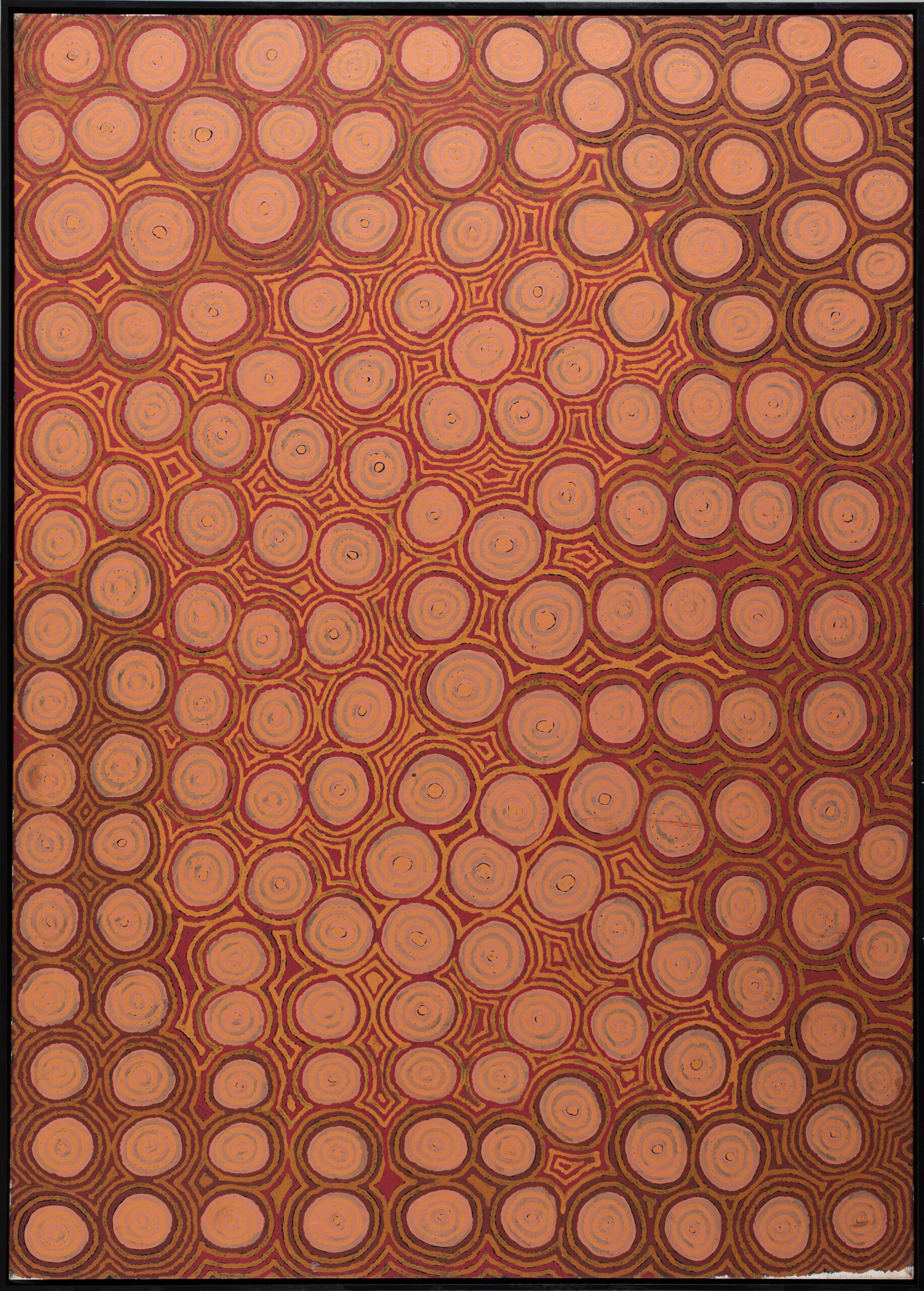Born around 1950 in the vast desert expanses of central Australia, near the community of Kiwirrkura, Kenny Williams Tjampitjinpa emerges from a world where the land whispers ancient stories. He is the eldest son of Naata Nungurrayi and Pilamartitja Tjangala. His family settled in Papunya in 1963, a place where Aboriginal art began to flourish in the breath of modernity.
Tjampitjinpa is a painter whose work is inspired by the sacred cycle of the “Tingari.” His creations reflect an ancestral knowledge reserved for initiated men. In 1988, he joined the ranks of Papunya Tula artists, his perfectionist technique distinguished by delicate zigzag lines and earthy tones with subtle shades.
Throughout his life, Kenny Williams has experienced several chapters. He served as the president of “Papunya Tula Artists” for a few years, witnessing his role evolve until he was succeeded by Joseph Jurra Tjapaltjarri in 1999. His recognition as an artist solidified when he won the prestigious Telstra National Aboriginal Art Award in 2002.
His works navigate between the tangible and the intangible, evoking mythological stories, such as that of the “Kuniya” snakes, which weave through the landscapes of his childhood, from sand dunes to small pockets of water. These narratives, rooted in his father’s land, Yirrukurlu, are echoes of Pintupi culture, a collective memory that he strives to preserve through his art.
Throughout his career, Kenny has exhibited in numerous galleries, with his paintings finding a place in prestigious institutions such as the National Gallery of Australia and the Museum and Art Gallery of the Northern Territory. But beyond the awards and exhibitions, it is his intimate relationship with painting that defines his journey. Each brushstroke is a tribute to his ancestors, an act of respect for the materials he handles with care.
Today, Kenny Williams Tjampitjinpa continues to live and create. In each work, he invites us to contemplate a world where the visible intertwines with the invisible, where every color and line carries the weight of a centuries-old tradition.
